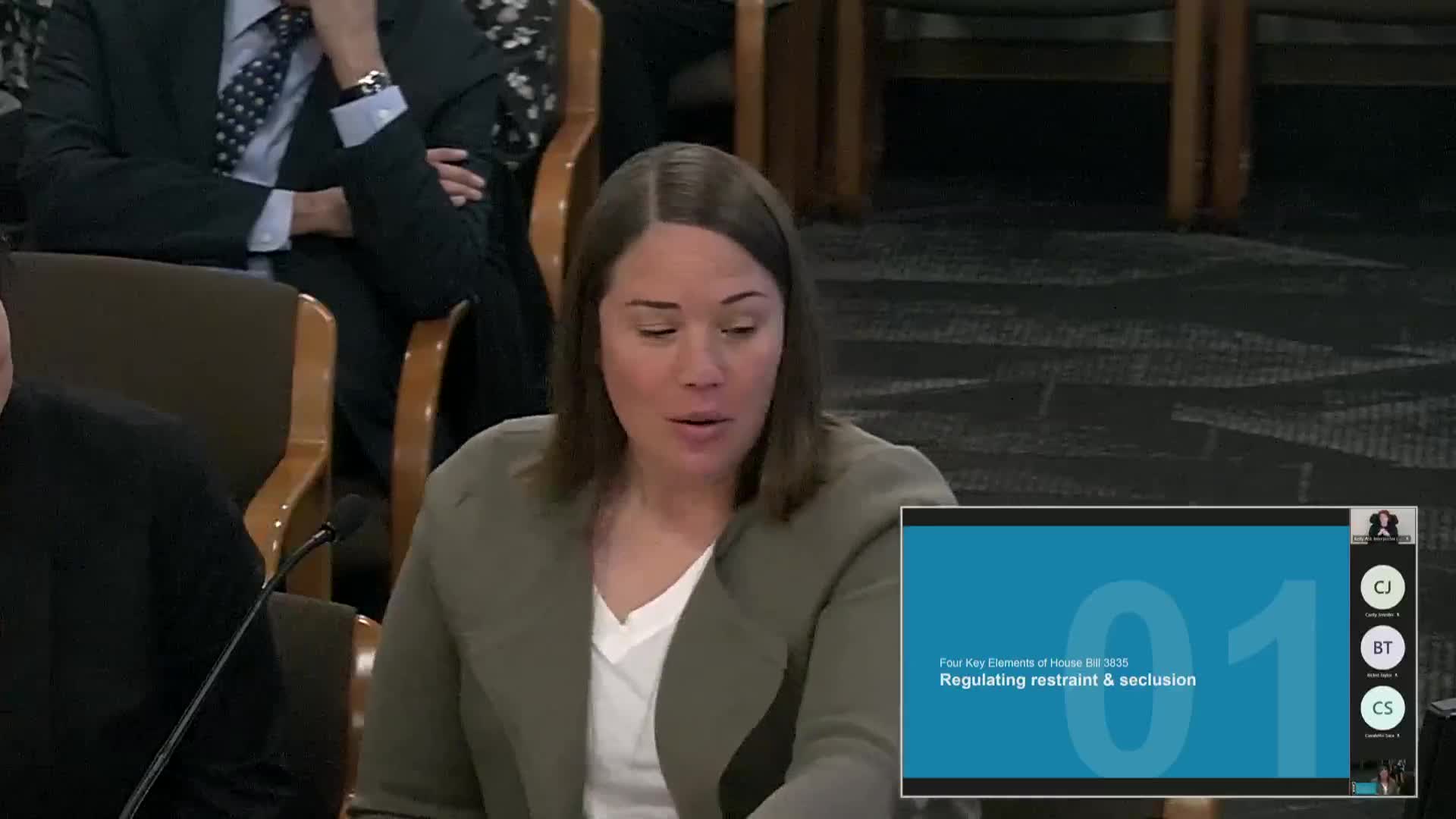Oregon legislators propose uniform definition for child restraint and seclusion regulations
March 11, 2025 | Early Childhood and Human Services, House of Representatives, Committees, Legislative, Oregon
This article was created by AI summarizing key points discussed. AI makes mistakes, so for full details and context, please refer to the video of the full meeting. Please report any errors so we can fix them. Report an error »

The Oregon House Committee on Early Childhood and Human Services convened on March 11, 2025, to discuss critical reforms regarding the regulation of restraint and seclusion in child-serving settings. The meeting highlighted the need for a unified definition of wrongful restraint and wrongful seclusion to eliminate confusion among families, youth, and mandatory reporters.
Dr. Geetjeet Malani emphasized that abuse should be recognized as such regardless of the setting. Currently, the definitions of wrongful restraint and seclusion differ between schools and placement settings, leading to inconsistencies in how child abuse is identified and reported. This disparity can create confusion, as actions considered abusive in one context may not be viewed the same way in another.
The proposed legislation aims to simplify the existing statutes, which currently involve 16 elements in schools and 32 in placement settings that could trigger child abuse allegations. The new bill seeks to establish a single, clear definition of wrongful restraint applicable across all child-serving environments. This change is expected to reduce the number of decision points from 32 to just three, focusing on serious misconduct such as using restraint as punishment or employing excessive force.
By clarifying what constitutes child abuse, the bill intends to alleviate the fear among staff of unjust investigations while ensuring that mandatory reporters and families have a better understanding of when to report abuse. Non-abuse violations, such as documentation errors or lapses in training, would be managed through licensing and human resources processes rather than triggering child abuse investigations.
The committee's discussions underscored the importance of creating a trauma-informed approach to youth engagement, allowing staff in schools and behavioral health settings to prioritize proactive interactions rather than risk avoidance. The proposed reforms are seen as a significant step toward improving the safety and well-being of children in Oregon's care.
Dr. Geetjeet Malani emphasized that abuse should be recognized as such regardless of the setting. Currently, the definitions of wrongful restraint and seclusion differ between schools and placement settings, leading to inconsistencies in how child abuse is identified and reported. This disparity can create confusion, as actions considered abusive in one context may not be viewed the same way in another.
The proposed legislation aims to simplify the existing statutes, which currently involve 16 elements in schools and 32 in placement settings that could trigger child abuse allegations. The new bill seeks to establish a single, clear definition of wrongful restraint applicable across all child-serving environments. This change is expected to reduce the number of decision points from 32 to just three, focusing on serious misconduct such as using restraint as punishment or employing excessive force.
By clarifying what constitutes child abuse, the bill intends to alleviate the fear among staff of unjust investigations while ensuring that mandatory reporters and families have a better understanding of when to report abuse. Non-abuse violations, such as documentation errors or lapses in training, would be managed through licensing and human resources processes rather than triggering child abuse investigations.
The committee's discussions underscored the importance of creating a trauma-informed approach to youth engagement, allowing staff in schools and behavioral health settings to prioritize proactive interactions rather than risk avoidance. The proposed reforms are seen as a significant step toward improving the safety and well-being of children in Oregon's care.
View full meeting
This article is based on a recent meeting—watch the full video and explore the complete transcript for deeper insights into the discussion.
View full meeting
